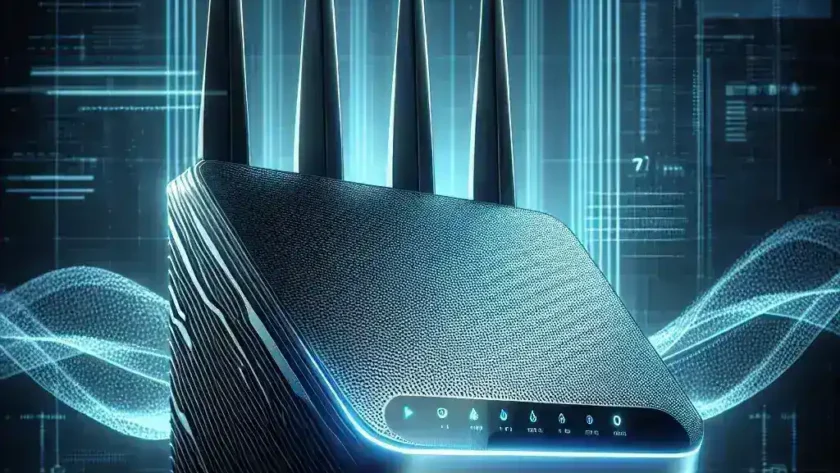Eero Enters the Wi-Fi 7 Arena: A Game Changer for Home Networks?
The world of home networking is abuzz. Eero, a name synonymous with seamless and reliable mesh Wi-Fi, has thrown its hat into the Wi-Fi 7 ring, promising a significant upgrade in speed and performance. But what does this actually mean for the average consumer? Let’s delve into the details, examining the technology, the implications, and the potential impact of Eero’s latest innovation.
Understanding the Wi-Fi 7 Advantage
Wi-Fi 7, the latest iteration in wireless technology, isn’t just a minor bump in the road; it’s a quantum leap. It builds upon the groundwork laid by its predecessors, offering a dramatic improvement in several key areas. Think of it as upgrading from a bicycle to a high-speed train – the difference is that stark. Key improvements include:
- Significantly Increased Speeds: Expect to see download and upload speeds that dwarf those of Wi-Fi 6 and earlier standards. We’re talking gigabit speeds and beyond, potentially revolutionizing streaming, gaming, and general internet usage.
- Reduced Latency: Lower latency translates to smoother, more responsive online experiences. Say goodbye to lag in online games and video calls. This improved responsiveness is crucial for applications demanding real-time interaction.
- Enhanced Capacity: Wi-Fi 7 is designed to handle more devices simultaneously without sacrificing performance. In a world of ever-increasing smart home devices, this is a critical advantage. Imagine a home filled with smart speakers, security cameras, and IoT gadgets all operating flawlessly.
- Improved Efficiency: Despite the increased speed and capacity, Wi-Fi 7 is designed to be more energy-efficient than previous generations. This means less strain on your home’s electrical system and a smaller carbon footprint.
Eero’s Implementation: What to Expect
Eero’s foray into Wi-Fi 7 is not simply about adopting the new standard; it’s about integrating it seamlessly into their already established and user-friendly mesh networking system. This means users can expect the same ease of setup and management that has made Eero a popular choice, combined with the raw power of Wi-Fi 7. This strategic move positions Eero at the forefront of the next generation of home networking.
While specific details are still emerging, we can anticipate several key features:
- Seamless Mesh Networking: Eero’s signature mesh technology will ensure consistent, high-speed coverage throughout your home, eliminating dead zones and providing a stable connection for all your devices.
- Advanced QoS (Quality of Service): This feature prioritizes bandwidth for specific applications, ensuring your gaming sessions or video calls aren’t interrupted by other devices hogging bandwidth.
- Robust Security Features: Expect robust security protocols to protect your network and data from unauthorized access. Security remains paramount, and Eero has a strong track record in this area.
- Easy Setup and Management: Eero’s user-friendly app will provide a simple, intuitive interface for managing your network. Even novice users will find setup and configuration a breeze.
The Bigger Picture: Wi-Fi 7’s Impact on the Future
The launch of Eero’s Wi-Fi 7 routers is more than just a product announcement; it’s a significant step towards a future of truly seamless and ubiquitous connectivity. The implications are vast, touching upon various aspects of our lives:
- The Rise of Smart Homes: With the increased capacity and speed of Wi-Fi 7, the smart home revolution will accelerate, enabling greater integration and control of our homes through interconnected devices.
- Enhanced Entertainment Experiences: High-definition streaming, cloud gaming, and virtual reality applications will all benefit significantly from lower latency and higher bandwidth.
- Boost to Productivity: For remote workers and students, reliable high-speed internet is essential. Wi-Fi 7 promises to enhance productivity by eliminating connectivity issues.
- Future-Proofing Your Home Network: Investing in Wi-Fi 7 technology is an investment in the future. It ensures your home network remains cutting-edge for years to come.
Challenges and Considerations
While the potential benefits of Wi-Fi 7 are undeniable, several challenges and considerations remain:
- Cost: Initially, Wi-Fi 7 routers, including Eero’s offerings, will likely be more expensive than their predecessors. This is a common trend with new technologies.
- Device Compatibility: For Wi-Fi 7 to function optimally, all your devices need to support the standard. This may require upgrading some of your current devices.
- Interference: As with any wireless technology, interference from other devices and environmental factors can affect performance. Careful placement of routers is key.
Conclusion: A Step into the Future
Eero’s entry into the Wi-Fi 7 market represents a significant advancement in home networking. While challenges remain, the potential benefits – increased speed, lower latency, and enhanced capacity – are undeniable. For those who demand the best in home connectivity and are prepared to embrace the latest technology, Eero’s Wi-Fi 7 routers represent a compelling investment in the future of home networking. This upgrade is not just about faster speeds; it’s about a transformative experience that will redefine how we interact with our digital world.
For more information on Wi-Fi standards, you can check out resources like the Wi-Fi Alliance website and for general networking information, consult Cisco’s website.

